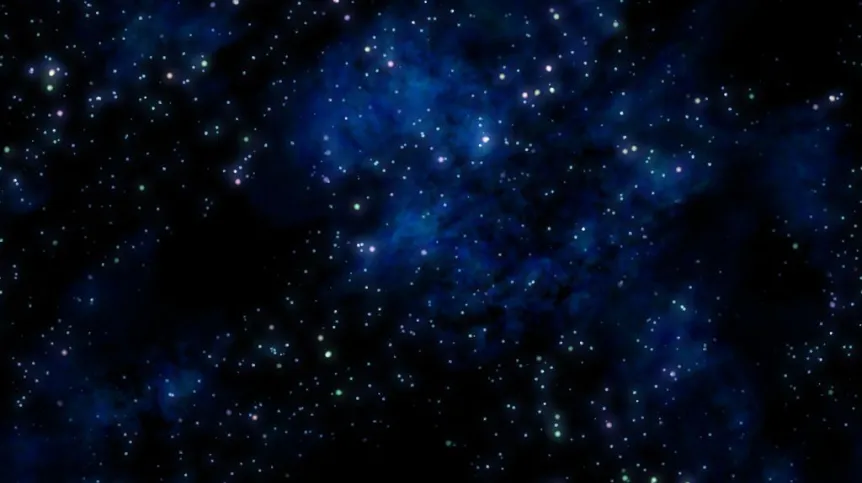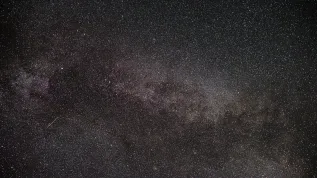
The first system of planets outside the Solar System was discovered by Aleksander Wolszczan, opening a new chapter in astronomy. Since then, searching for planets has become almost a Polish domain, and today new objects are being discovered now not only by scientists, but also the Polish Internet users, and even high school students.
It all began in September 1991, when Prof. Aleksander Wolszczan discovered the first planetary system outside the Solar System. Information about the groundbreaking for the world of science discovery was published in "Nature" in January 1992. The discovery earned Wolszczan a place among the greatest scientists in history, and the journal "Nature" listed it among the most fundamental discoveries they published.
In the constellation Virgo, Polish scientist identified the pulsar PSR B1257+12, which had its own planetary system: at least three planets orbiting a star. The discovery was made in Arecibo Observatory in Puerto Rico, where Wolszczan, together with scientists from other countries, studied the sky with the world\'s largest radio telescope.
In 2011, the PennState Torun Planet Search (PTPS) led, among others, by Prof. Wolszczan, enabled the discovery of three more planets outside the solar system. These planets have masses similar to that of Jupiter, and are so called gas giants, massive objects composed mostly of gas and ice.
Many Polish scientists followed in Prof. Wolszczan’s footsteps and greatly contributed to the search for planets outside the Solar System. One of the most successful projects in this area is the OGLE project led by Prof. Andrzej Udalski, carried out at the University of Warsaw. In this project, gravitational microlensing method is used to search for distant objects, including planets.
In 2010, using this method, an international team led by Polish astronomer Radosław Poleski from Ohio State University has discovered a distant planet similar to Uranus.
Also thanks to this method, in 2013, an international team of researchers, with the participation of Poles, discovered a planetary system with a cold planet the size of two Earth masses. Report on the discovery was published by the prestigious American journal "Science".
Discovered planetary system consists of one planet and two stars. The distance between the planet and the star that it orbits, is comparable to the Earth-Sun distance. The second star is 15 times farther, more or less three times the distance from Jupiter to the Sun. The mass of the planet is only twice the mass of the Earth. The temperature on the surface probably does not exceed minus 200 degrees Celsius. If you stood on the surface of the planet and look at the sky, you would see two "suns" with very red discs, and light much weaker than our Sun. You would also cast two shadows, and the nights would be much shorter due to the rising and setting of two stars instead of one.
Astronomers from Poland, Spain and the US have also discovered a planet orbiting so-called red giant and evidence that the star destroyed another planet of the system. They demonstrated that such fate may await some of the planets in the Solar System. All because after billions of years of evolution a star such as the Sun begins to grow, and its dimensions may reach the Earth’s orbit. Star in this phase is called red giant. This will happen to the Sun in about 5 billion years, and have a significant influence on the fate of planets such as Mercury, Venus, and maybe even Earth. The main author of the publication, which appeared in "Astrophysical Journal Letters" was Monika Adamów from Torun Centre for Astronomy of the Nicolaus Copernicus University.
Special project Solaris, run since 2010 by astronomers from the Nicolaus Copernicus Astronomical Center PAS in Toruń will also help in the search for extrasolar planets. In this framework, a global network of automated telescopes is being built to help search for planets in binary star systems, in which planets planet have two suns in the sky. Such telescopes already operate in Argentina, South Africa and Australia.
However, not only scientists are successful planet seekers, Internet users have had success too. One of them for a few hours in March 2013 was "hunted" by media worldwide.
Social science project Zoouniverse.org team was searching for the Pole who discovered extrasolar planet PH2 b, but was not aware of it. It was known only that he used the login rafcioo28. The search ended successfully after a few hours, and the lucky discoverer turned out to be a computer scientist from Zgierz Rafal Herszkowicz, for whom astronomy was only a hobby.
"At first I thought it was a joke. However, I read the content in more detail, I checked the websites and came across information that I was missing in action and they were searching for me" - he told PAP. His adventure with the search for planets began when he read an article on the internet about the Kepler telescope and the Planet Hunters project, in which anyone can help discover planets. "I had some free time and was lucky enough to get the material with the transit of the planet, and I was the first to mark it" - he added.
New planet have also been discovered by Polish students from Toruń and Sierpc in the project International Asteroid Search Campaigns (IASC). In 2007, they discovered the asteroid 199950, which orbits the Sun every 3.74 years. Three years later, they added the asteroid 273377, orbiting the Sun every 5.26 years.
In 2012, these objects have received official names: Sierpc, from the name of the town in Mazovia, and LechMankiewicz - in honor of the current director of the Center for Theoretical Physics PAS and populariser of science. The names proposed by students from Stefan Banach Secondary School No. 10 in Toruń and Casimir Jagiellon High School No.9 were given by the International Astronomical Union.
"When we received the right to name the discovered asteroid, we have compiled a list of 12 proposals, which we then shortened. For a time one of potential names was Adam Małysz. Finally we settled on Lech Mankiewicz - a man, whose efforts made it possible for Polish students to participate in asteroid search projects" - explained Bogdan Sobczuk from the Secondary School No. 10 in Toruń.
PAP - Science and Scholarship in Poland, Ewelina Krajczyńska
ekr/ agt/ mrt/
tr. RL













